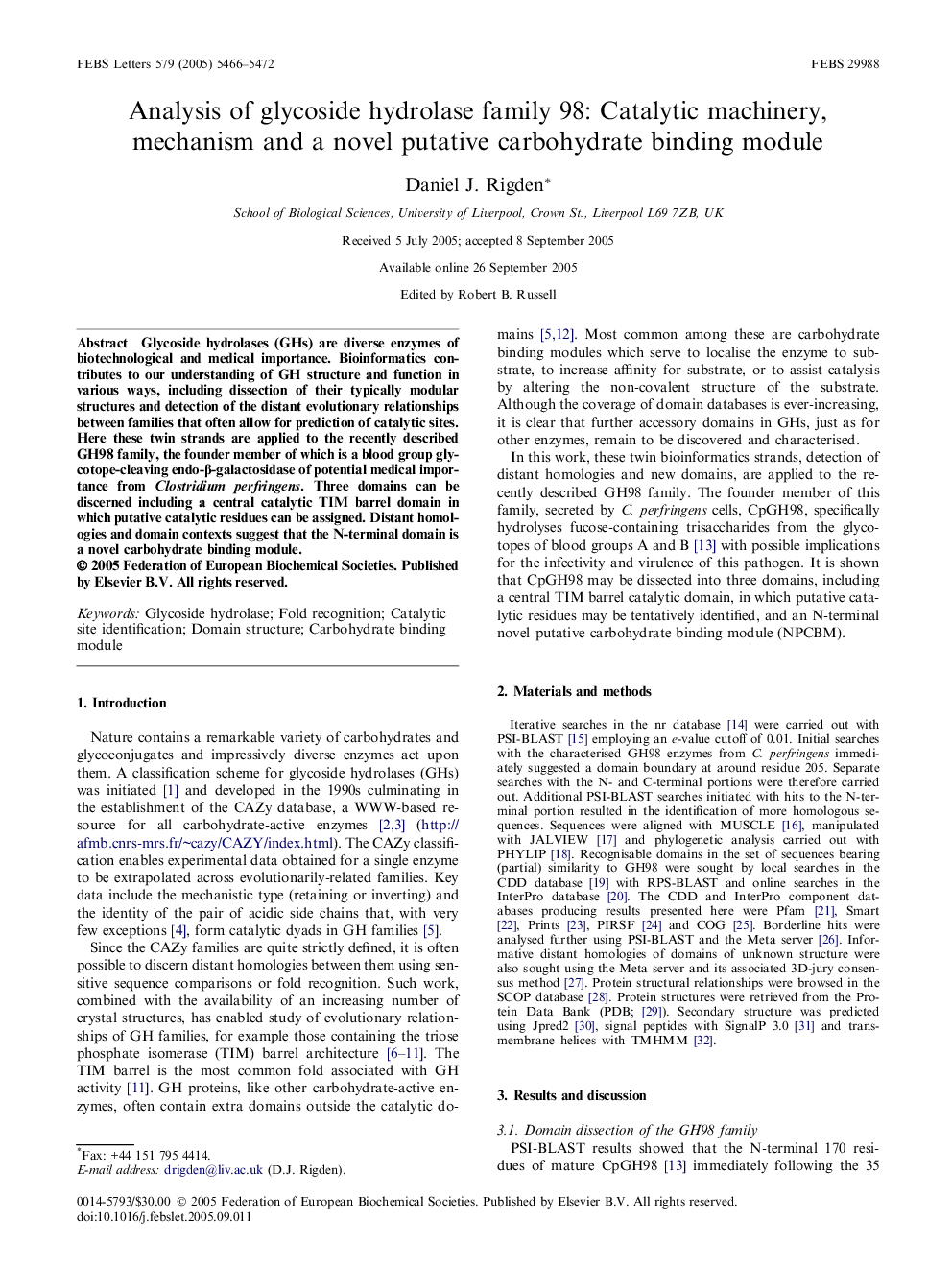| Article ID | Journal | Published Year | Pages | File Type |
|---|---|---|---|---|
| 2052513 | FEBS Letters | 2005 | 7 Pages |
Glycoside hydrolases (GHs) are diverse enzymes of biotechnological and medical importance. Bioinformatics contributes to our understanding of GH structure and function in various ways, including dissection of their typically modular structures and detection of the distant evolutionary relationships between families that often allow for prediction of catalytic sites. Here these twin strands are applied to the recently described GH98 family, the founder member of which is a blood group glycotope-cleaving endo-β-galactosidase of potential medical importance from Clostridium perfringens. Three domains can be discerned including a central catalytic TIM barrel domain in which putative catalytic residues can be assigned. Distant homologies and domain contexts suggest that the N-terminal domain is a novel carbohydrate binding module.
